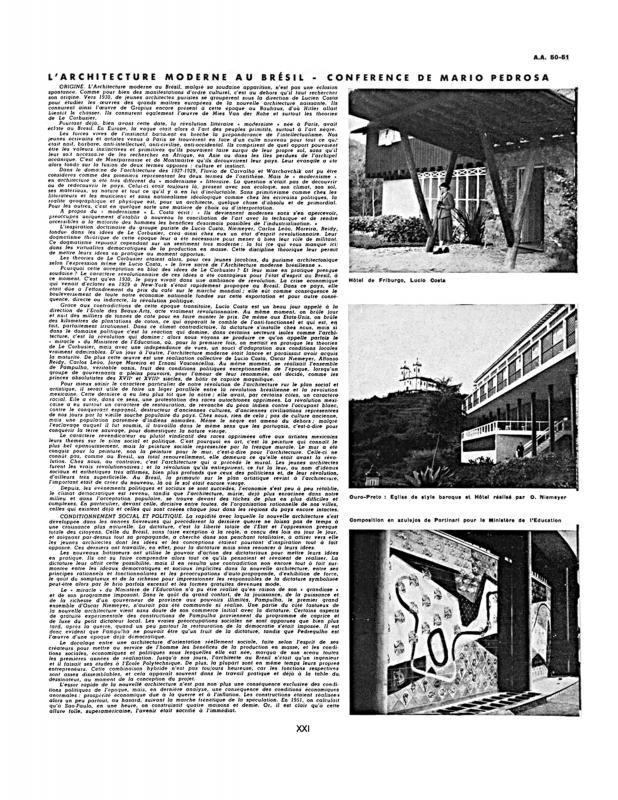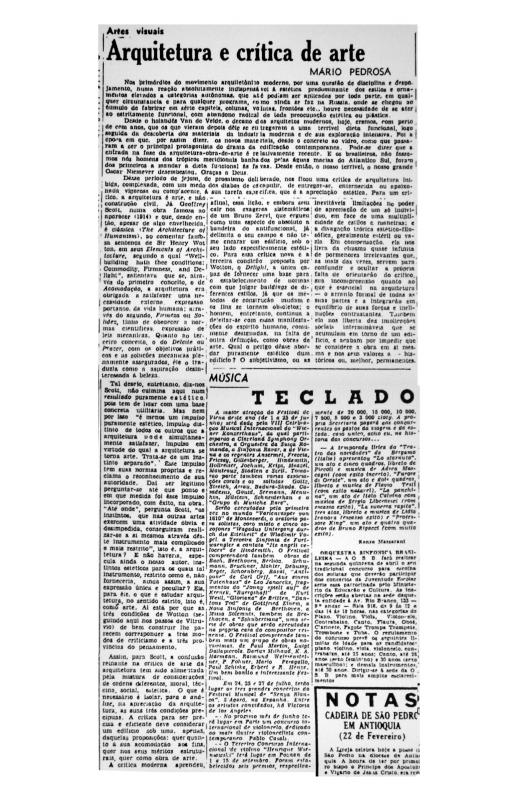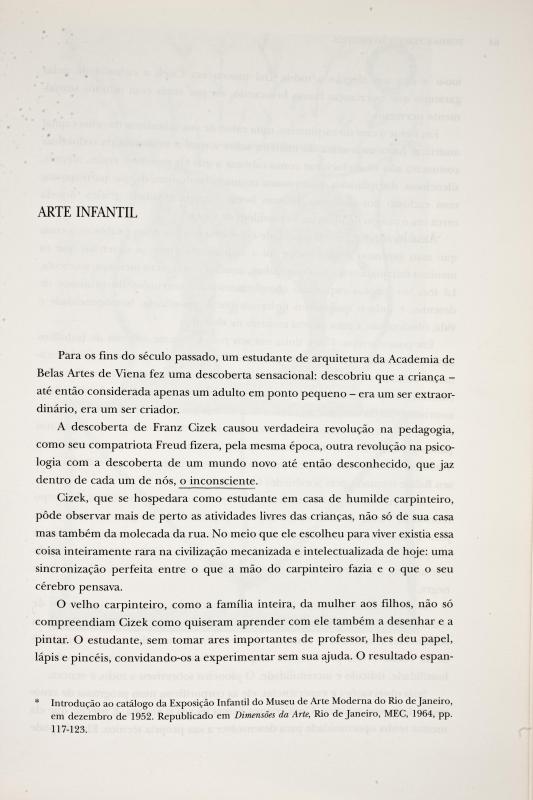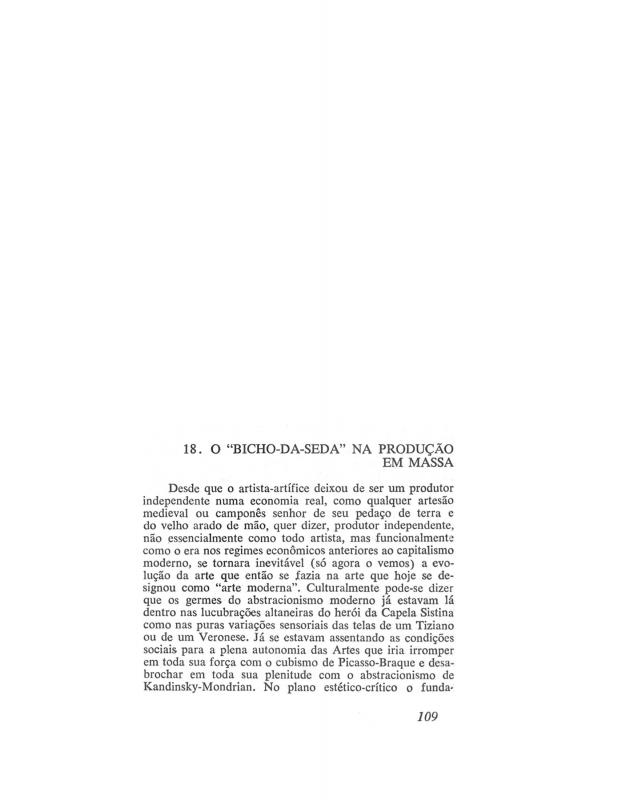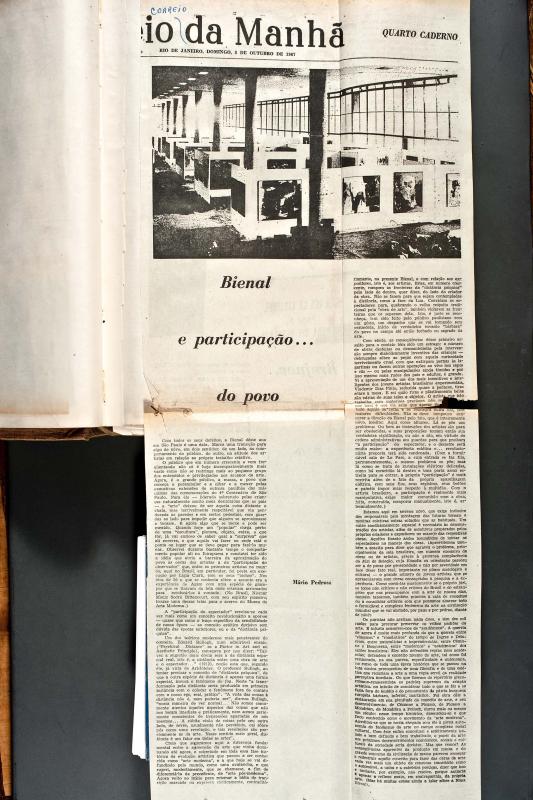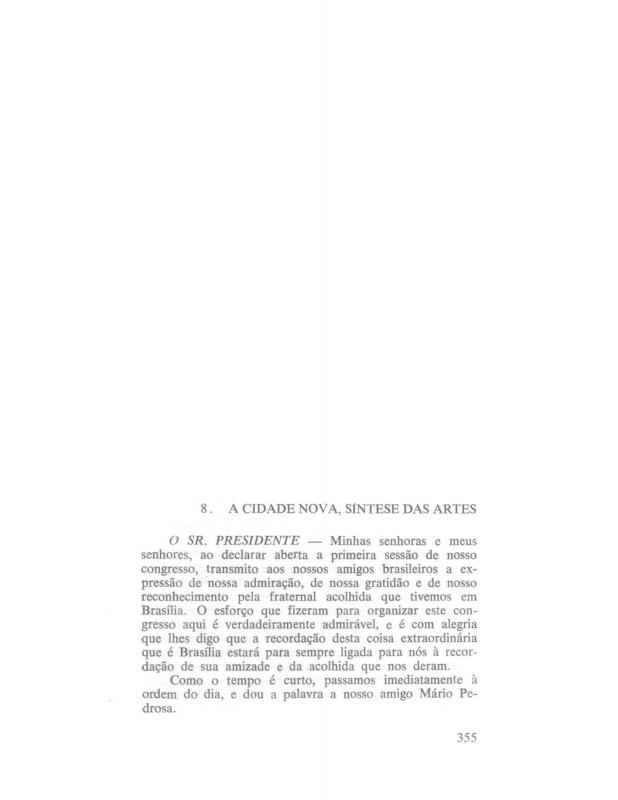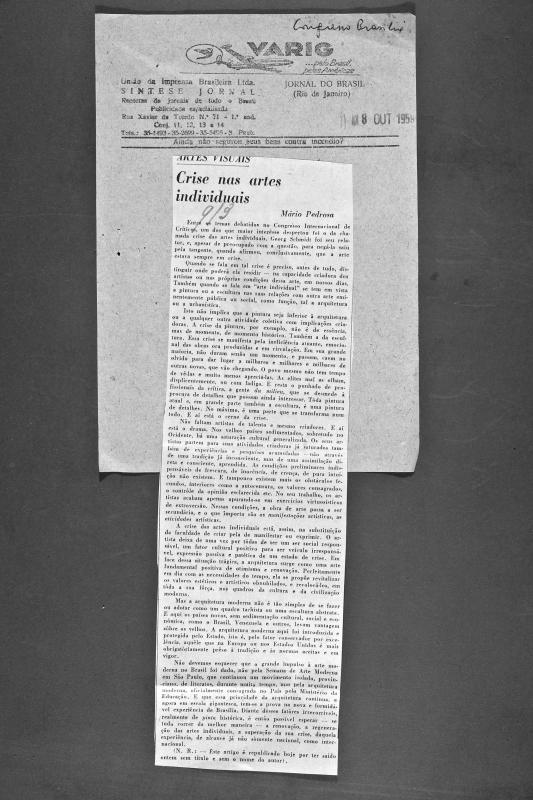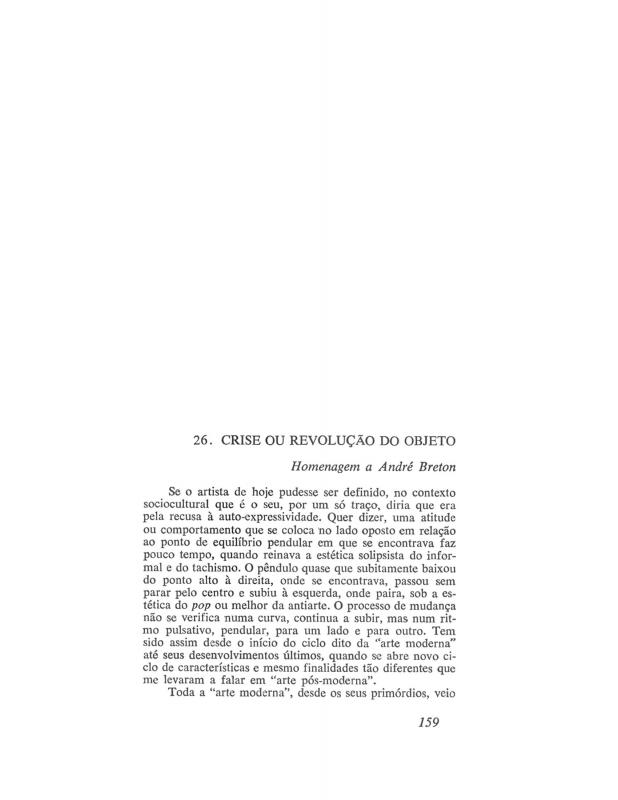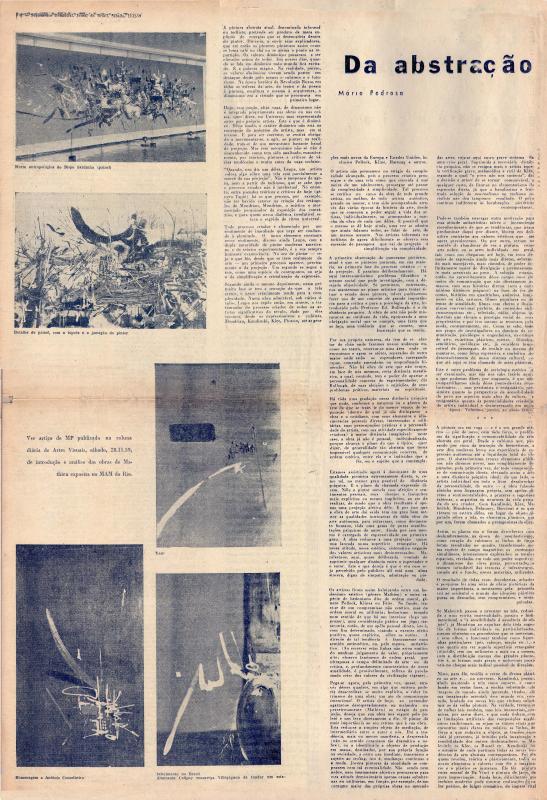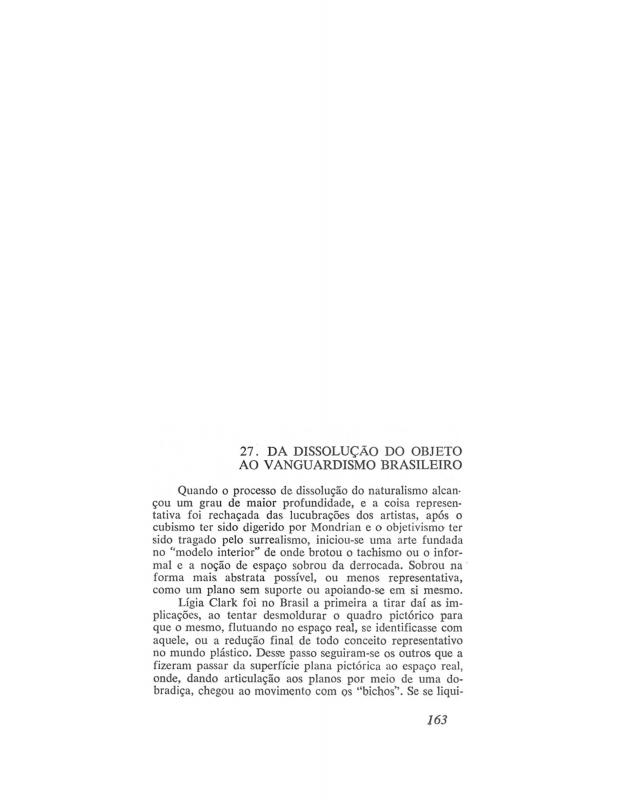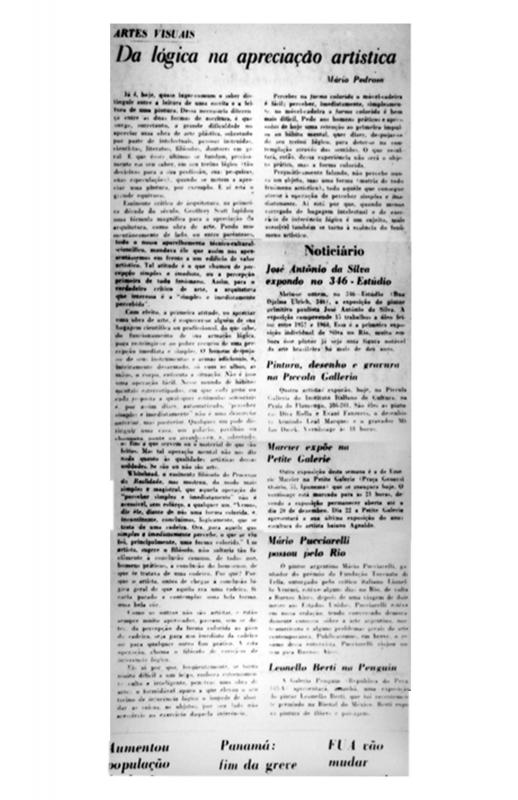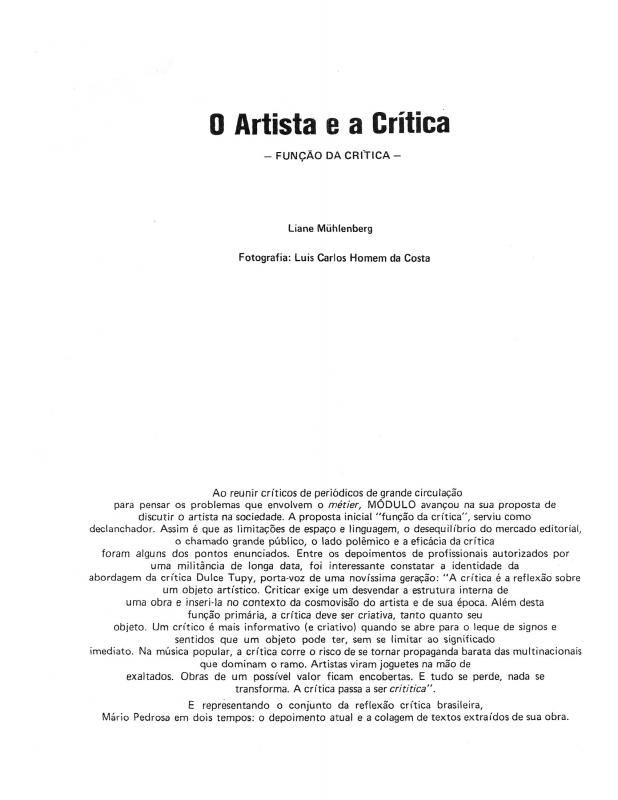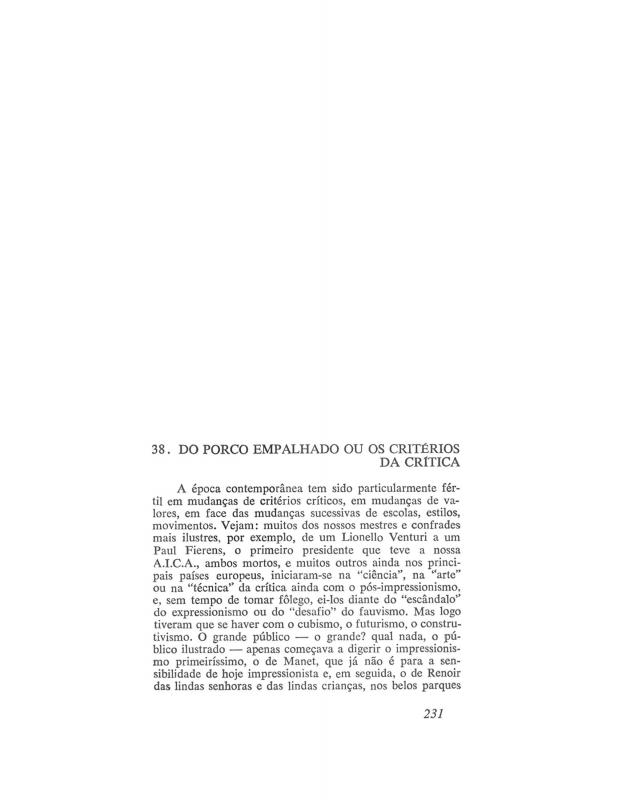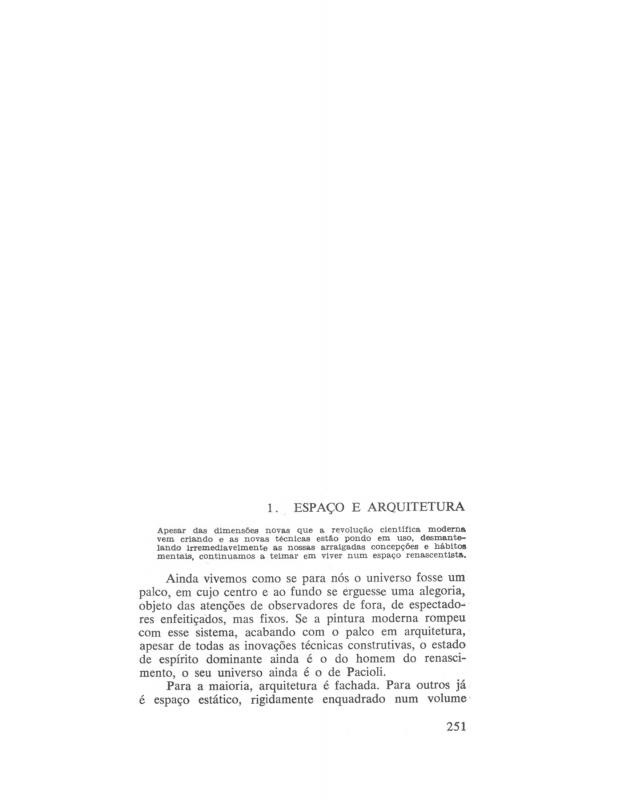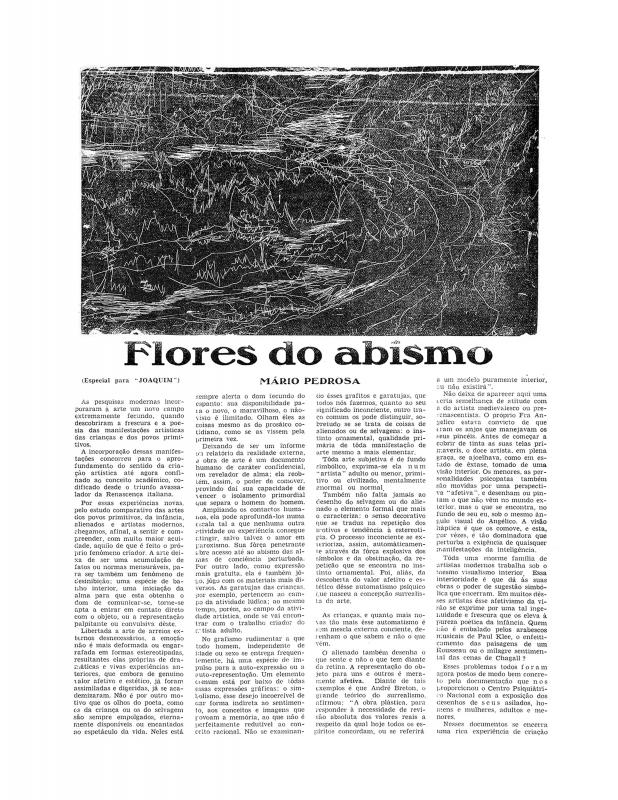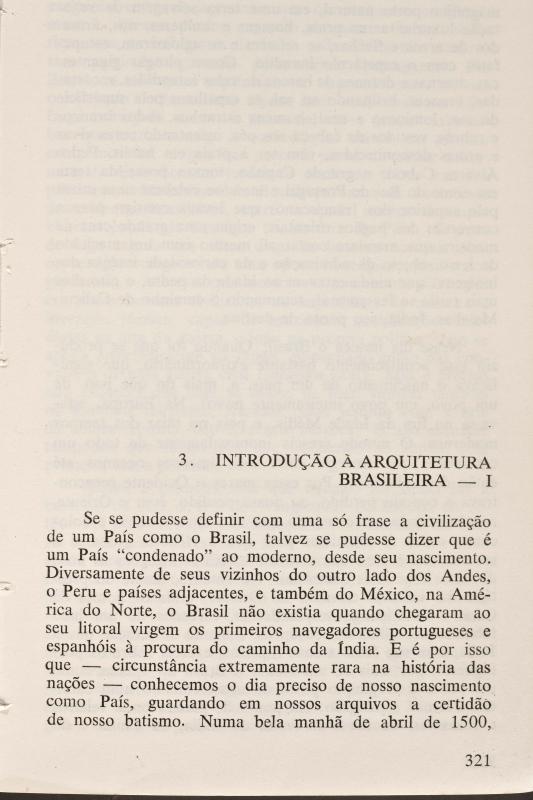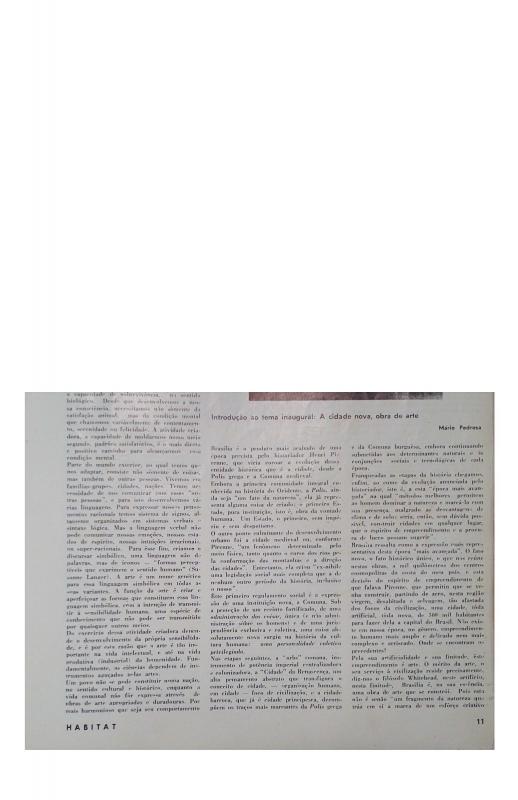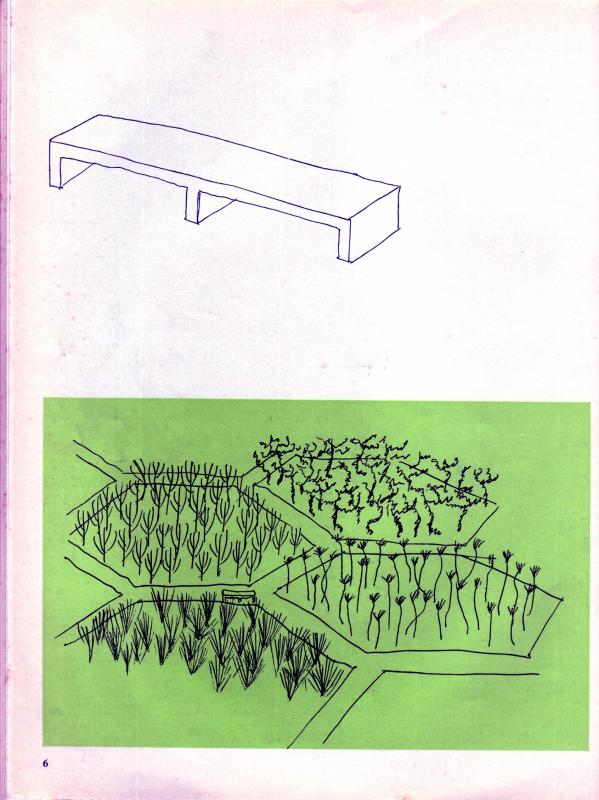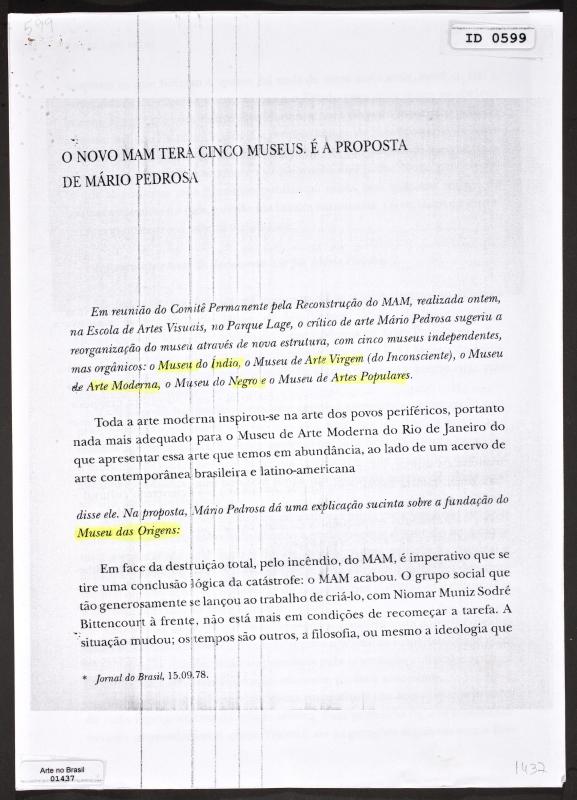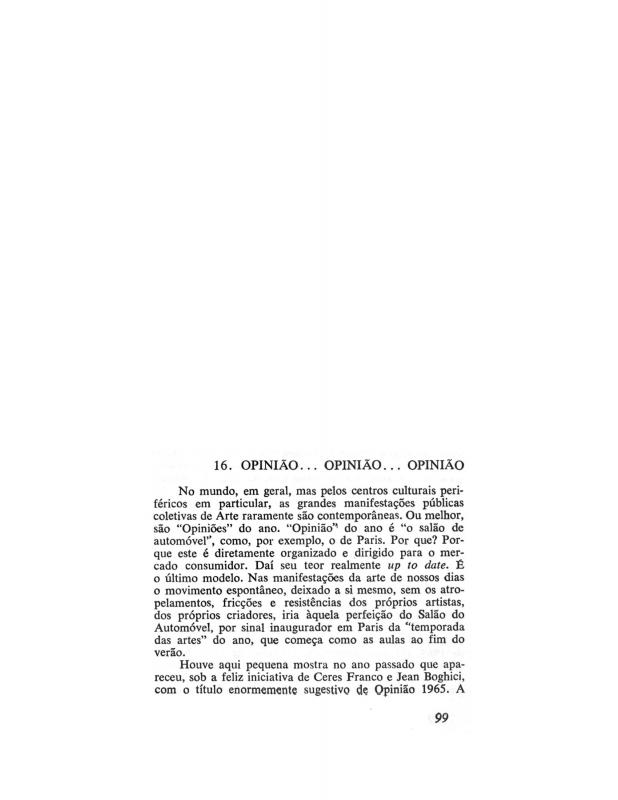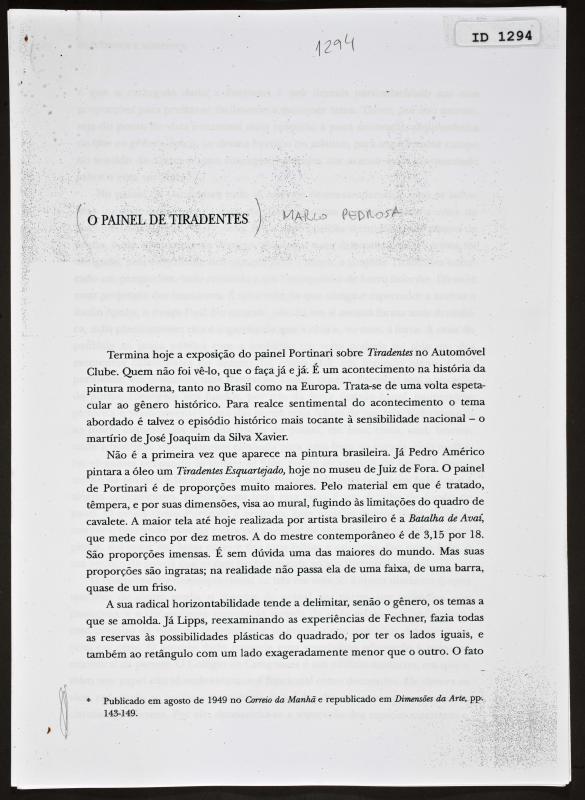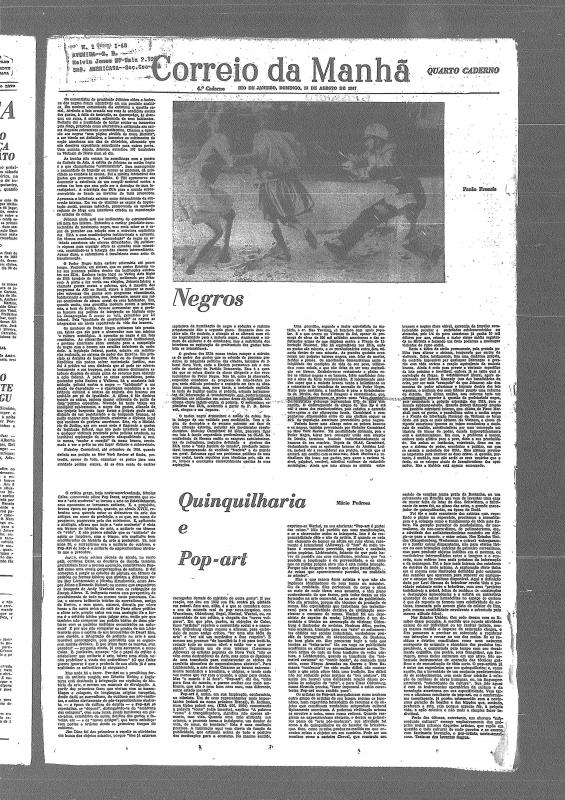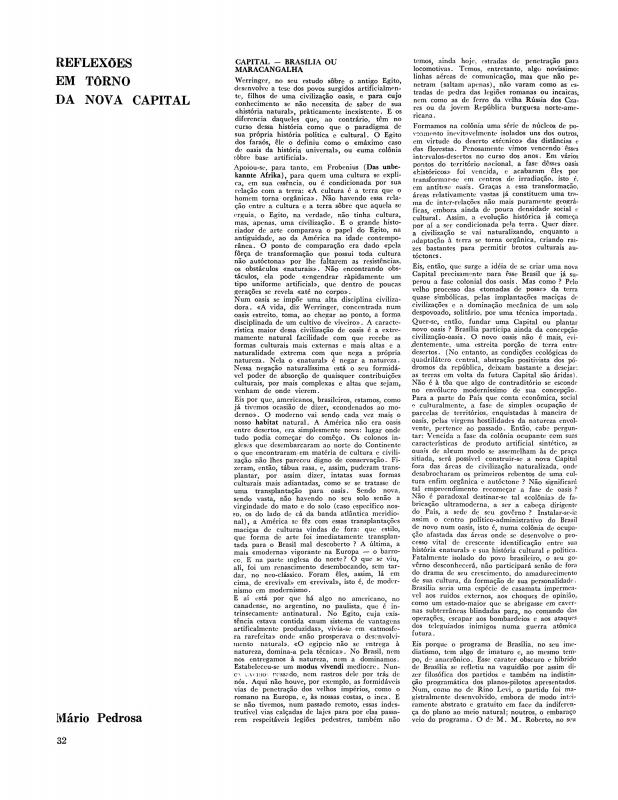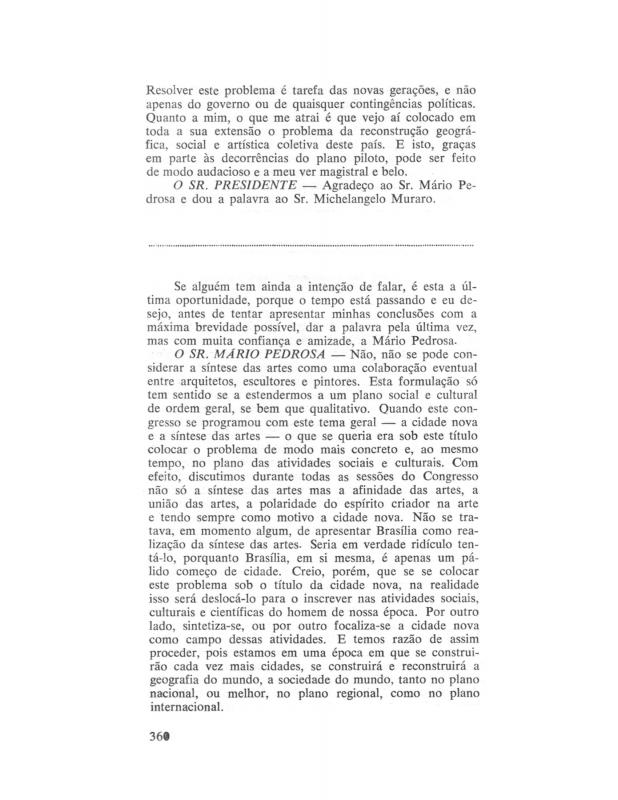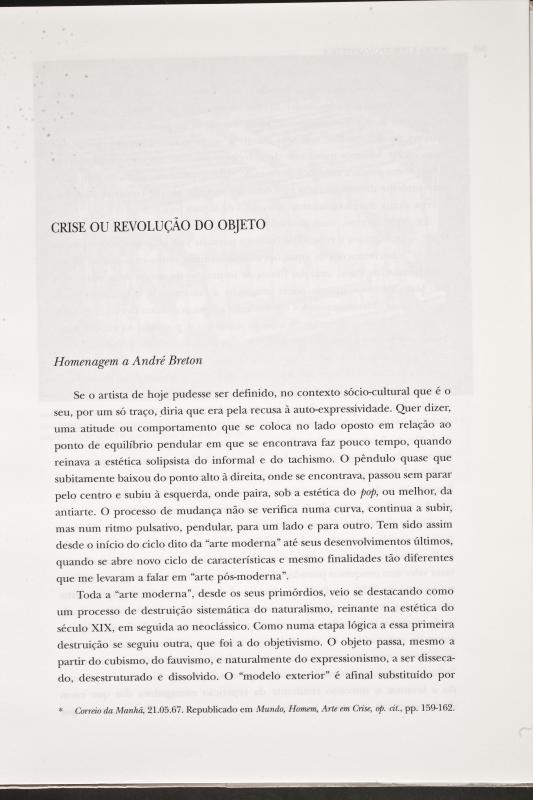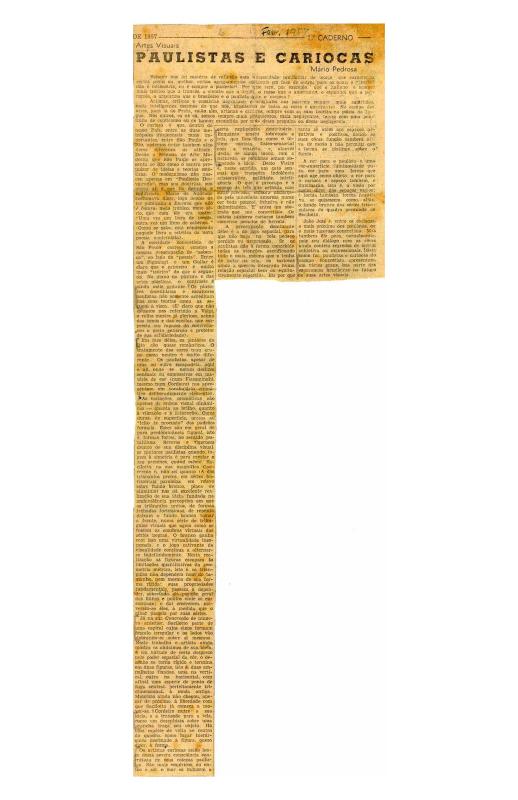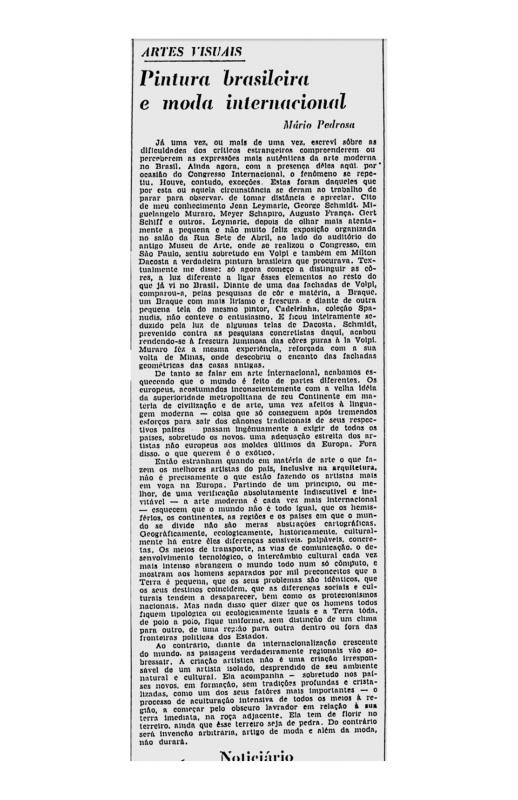Art critic Mário Pedrosa expresses his concern about the role of the artist in mass society and the possibility of protecting creation from the laws of the market. Pedrosa reworks the notion of “postmodern art” that he had used in relation to the work of Hélio Oiticica.
Intellectual and politician Mário Pedrosa (1900–81) was unquestionably the pivotal figure in twentieth-century Brazilian art theory and criticism. He began as an international politics correspondent for the Diário da Noite. He joined the Brazilian Communist Party (PCB) in the 1920s, and in 1932 he was arrested for his political activism as a Trotskyite. During the Estado Novo under Getúlio Vargas, Pedrosa lived in exile in France and New York, returning to Brazil after World War II. A contributor to Correio da Manhã, he later founded the weekly Vanguarda Socialista due to his anti-Stalinist position. For his doctoral thesis in aesthetics, entitled “Da natureza afetiva da forma na obra de arte” (1949), presented at the Faculdade de Arquitetura (Rio), he made use of his background in philosophy and Gestalt psychology. He was one of the founders of International Association of Art Critics (AICA) (1948) and he helped organize the International Congress of Art Critics (Brasilia, 1959). From 1950 to 1954, he wrote a column on art for Tribuna da Imprensa and, in that decade, he was a member of the organizing committee for the 2nd and 3rd editions of the São Paulo Biennial (1953 and 1955 respectively) before becoming the director of MAM-SP from 1961 to 1963. He was the Secretary of the National Council of Culture during Jânio Quadros’s brief term as president. During the military dictatorship in Brazil, he sought exile in Chile where he directed the Museo de la Solidaridad in Santiago. After the coup under Pinochet (1973), he went to Havana where he was the secretary of the Museo de la Resistencia Salvador Allende. He did not return to Brazil until 1977, at the beginning of the amnesty. In 1980, he was the first person to sign the manifesto founding the Partido dos Trabalhadores (PT). Part of his vast library (some eight thousand volumes) is available at the Biblioteca Nacional in Rio de Janeiro.
[For further reading, see the following texts by Mário Pedrosa in the ICAA digital archive: “Abstração ou figuração ou realismo?” (doc. no. 1085648), “L’architecture moderne au Brésil” (doc. no. 1086489), “Arquitetura e crítica de arte” (doc. no. 1086553), “Arte Ambiental, arte pós-moderna, Helio Oiticica” (doc. no. 1110622), “Arte infantil” (doc. no. 1110389), “Arte signográfica” (doc. no. 1085678), “Arte, necessidade vital” (doc. no. 1110355), “O ‘bicho-da-seda’ na produção em massa” (doc. no. 1110436), “Bienal e participação... do povo” (doc. no. 1111108), “A cidade nova, síntese das artes” (doc. no. 1086503), “Crise nas artes individuais” (doc. no. 1110406), “Crise ou revolução do objeto: homenagem a André Breton” (doc. no. 1110434), “Da abstração a auto-expressão” (doc. no. 1085707), “Da dissolução do objeto ao vanguardismo brasileiro” (doc. no. 1110435), “Da lógica na apreciação artística” (doc. no. 1086587), “Debate: o artista e a crítica” (doc. no. 1110951), “Do ‘informal’ e seus equívocos” (doc. no. 1085759), “Do porco empalhado ou os critérios da crítica” (doc. no. 1110442), “Espaço e arquitetura” (doc. no. 1087020), “Flores do abismo” (doc. no. 780902), “Grupo Frente” (doc. no. 1083731), “Introdução à arquitetura brasileira – I; Introdução à arquitetura brasileira – II” (doc. no. 1086620), “Introdução ao tema inaugural: A cidade nova, obra de arte” (doc. no. 1110409), “Intróito à Bienal” (doc. no. 1090338), “Lições do Congresso de Críticos” (doc. no. 1110410), “Lições do congresso internacional de críticos” (doc. no. 1086667), “MAM: reconstrução” (doc. no. 1111078), “A máquina, Calder, Léger e outros” (doc. no. 1085302), “Mestres da arte virgem” (doc. no. 1110393), “O novo MAM terá cinco museus. É a proposta de Mário Pedrosa” (doc. no. 1110466), “Opinião... opinião... Opinião...” (doc. no. 1090568), “O painel de Tiradentes” (doc. no. 1111004), “Parecer sôbre o ‘CORE’ da Cidade Universitária” (doc. no. 1110830), “Pernambuco, Cícero Dias e Paris” (doc. no. 1110816), “Quinquilharia e pop-art” (doc. no. 1110437), “Reflexões em torno da nova capital” (doc. no. 1086728); (untitled) “Se alguém tem ainda a intenção de falar (…)” (doc. no. 1086986), “Variações sem tema ou arte da retaguarda” (doc. no. 808010), “Paulistas e cariocas” (doc. no. 1085056), “Pintura brasileira e moda internacional” (doc. no. 1126469), and “Problemas da pintura brasileira” (doc. no. 1075171)].

